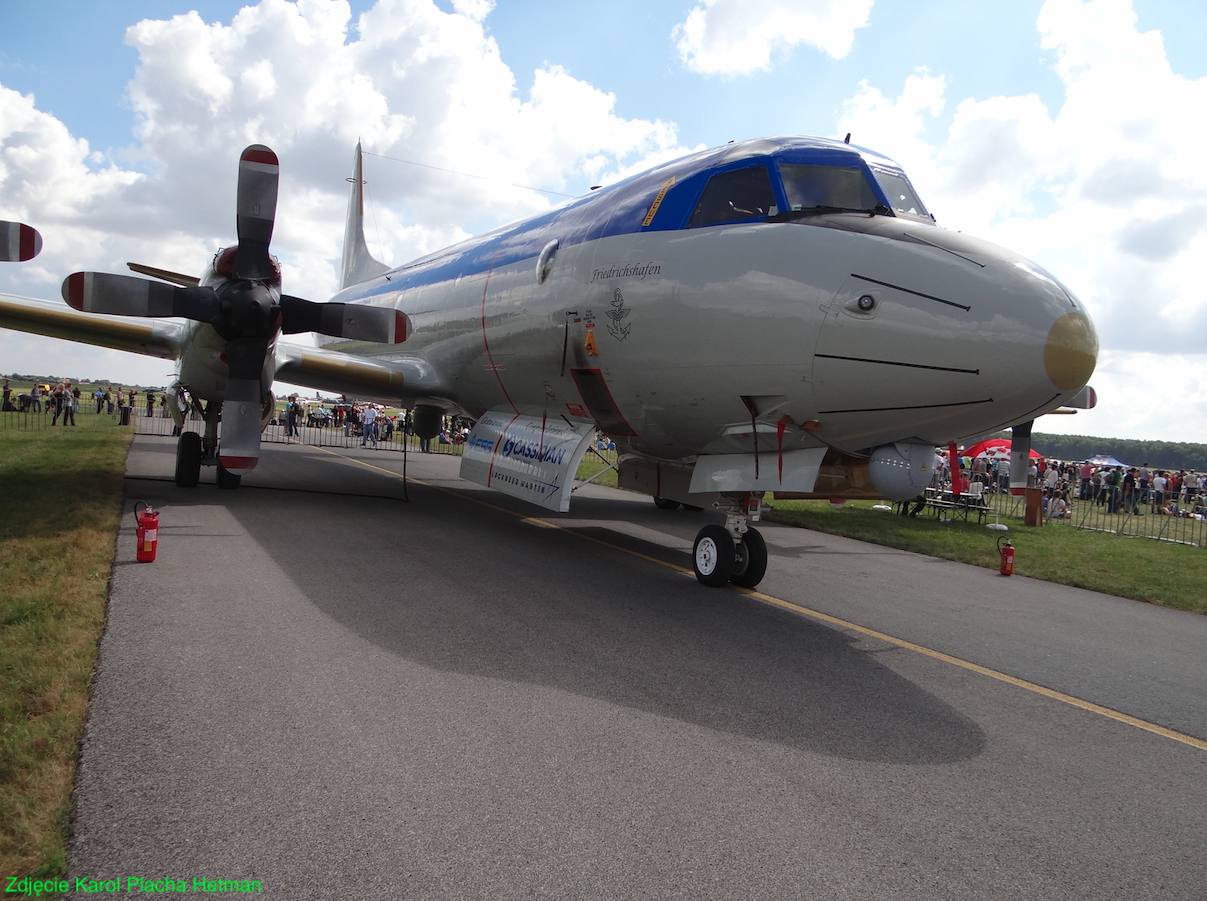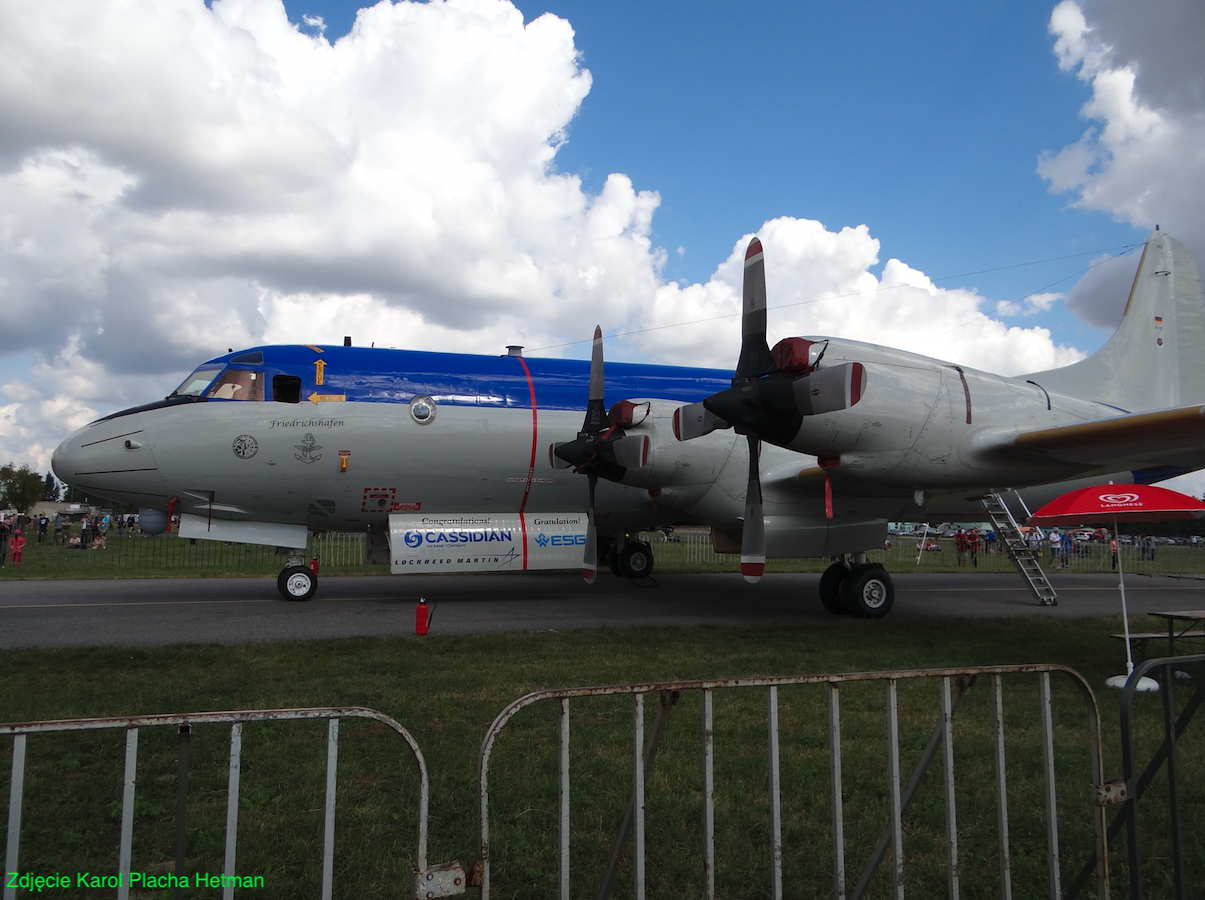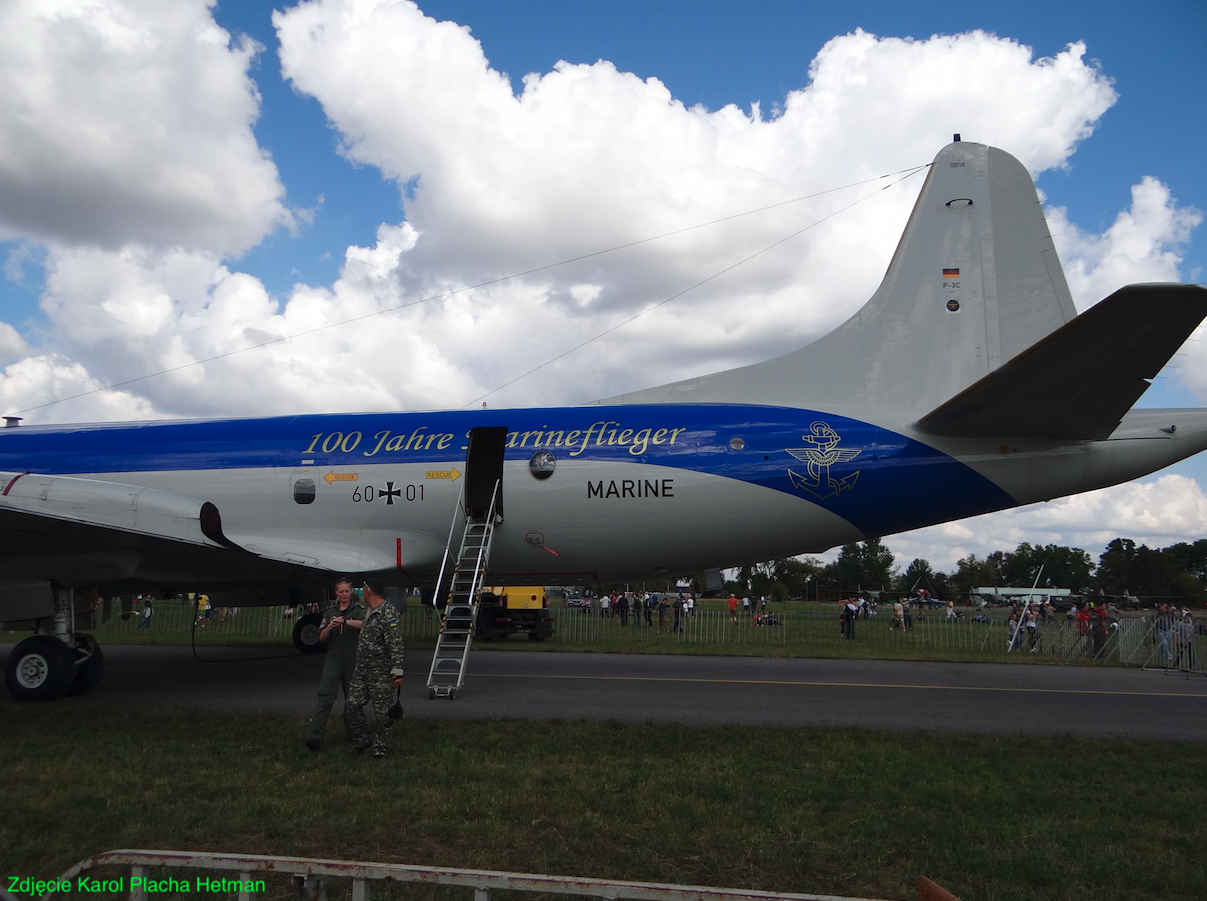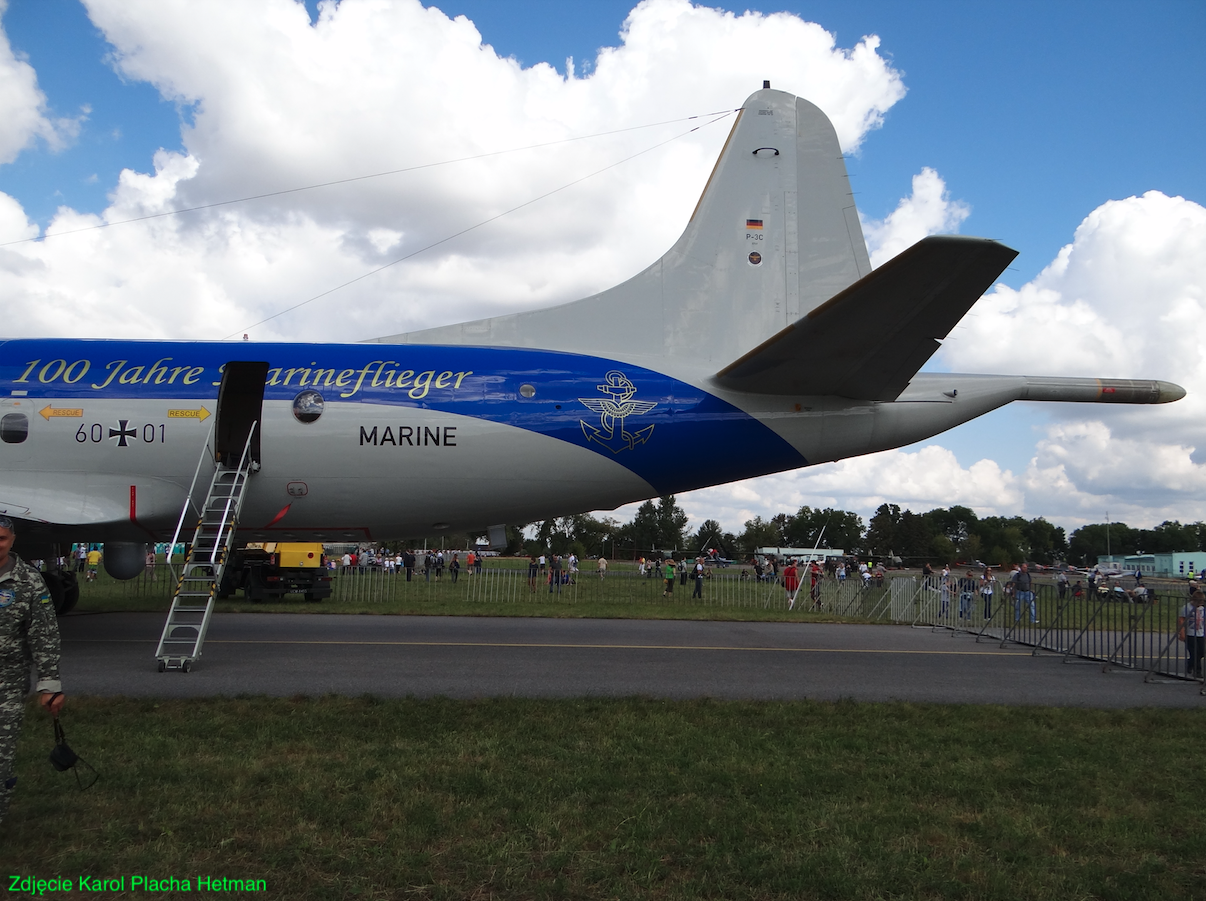Warszawa 2023-03-07
Lockheed P-3 Orion.
Before discussing the Lockheed P-3 Orion military aircraft, let's look at the Lockheed L-188 Electra transport aircraft, which was the ancestor.






Lockheed L-188 Electra.
Lockheed L-188 Electra is a four-engine passenger plane produced by the American company Lockheed. It was the first large transport aircraft in the US to have a turboprop drive. The Lockheed L-188 Electra aircraft was built in 170 copies and was operated in 29 countries. In six countries, aircraft were used as military and government aircraft.
In 1954, in the USA, the first order for a turboprop aircraft came from Capital Airlines, which later merged with United Airlines. As no other airline showed interest, Lockheed did not take up the work. Therefore, Capital Airlines ordered 60 British Vickers Viscount aircraft.
In 1955, American Airlines submitted a similar request to Lockheed, but for a larger plane that would take 75 passengers on board, and the plane was to cover the entire country non-stop (range 3,220 km). Other airlines joined the program and cabin capacity increased to 90 passengers. The aircraft was enlarged enough to use the Allison 501-D13 turboprop engines used in the Lockheed C-130 Hercules aircraft. The first contract for the purchase of Lockheed Model 188 aircraft was signed on June 8, 1955. Within two years, Lockheed won orders for 129 Lockheed L-188 Electra aircraft. The prototype was flown on December 6, 1957.
In the initial period, the aircraft proved to be good and Lockheed received many orders. The more so that the Lockheed company had an established position after the success of the Lockheed Constellation aircraft, of which over 800 copies had already been produced at that time. However, the first two disasters forced the introduction of an expensive program to remove structural defects. After the first disasters, no more orders were received from the airlines. 170 Lockheed L-188 Electra aircraft were built, with as many as 58 crashes.
At the beginning of the 1960s, turboprop aircraft were displaced from passenger transport and were replaced by turbojet aircraft. Despite this, many Lockheed L-188 Electra aircraft were converted to cargo and served for many years.
Data T-T Lockheed L-188 Electra:
Crew of 3 aviators + 3 stewardesses. Passengers up to 85 people. First flight on December 6, 1957. Number of 170 copies. Allison 501-D13, 4 x 3,800 hp (4 x 2,800 kW) or Allison 501-D15, 4 x 4,110 hp (4 x 3,022 kW). Span 30.18 m. Length 31.81 m. Height 10.00 m. Curb weight 26,036 kg. Maximum weight 52,665 kg. Speed 721 km/h. Cruising speed 650 km/h. Operating ceiling 8,650 m. Range 4,450 km.
Lockheed P-3 Orion.
The Lockheed P-3 Orion is an American maritime reconnaissance and patrol aircraft. It is designed to combat submarines and other surface targets. The aircraft was built on the basis of the Lockheed L-188 Electra passenger aircraft.
An order for a patrol and combat aircraft was received from the US NAVY in August 1957. The aircraft was to replace the Lockheed P-2 Neptune machine. The basis for the new aircraft was the Lockheed L-188 Electra airframe, which had sufficient cabin space, a sufficiently long flight time, an appropriate range, and above all, the development time was relatively short. Four companies took part in the announced competition, but Lockheed was unbeatable. In addition, it offered modern turboprop engines.
The Lockheed P-3 Orion aircraft received a fuselage shortened by 2.13 m, which reduced the weight of the airframe. Inside, an electronic ASW (Anti Submarine Warfare) anti-submarine warfare system was installed, as well as armament suspended on nodes under the wings and in the bomb bay. Fewer windows were installed in the sides. Two convex portholes were installed for celestial navigation. Several new antennas were mounted on the fuselage. A magnetic anomaly detector was mounted at the end of the fuselage.
The first prototype of the aircraft, which was designated YP3V-1, took off on August 19, 1958. The first ordered series consisted of 7 aircraft. In the period 1961 - 1990, 757 aircraft were produced, of which 107 were built in Japan by Kawasaki. The planes went to 17 countries and are systematically modernized for new tasks. Currently (2023), the aircraft are still in operation.
Data T-T Lockheed P-3 Orion:
Metal construction (mainly duralumin). Crew of 11 soldiers. Allison T56-A-14 turboprop engines, 4 x 4,910 hp (4 x 3,661 kW). Span 30.37 m. Length 35.61 m. Height 10.27 m. Bearing area 120.77 square meters. Curb weight 27,890 kg. Take-off weight 64,410 kg. Fuel supply in the fuselage and in the additional tanks 28,350 kg + 9,072 kg. Top speed 761 km/h. Cruising speed 608 km/h. Range 3,835 km. Take-off length 1,673 m. Landing length 1,673 m.
Written by Karol Placha Hetman
